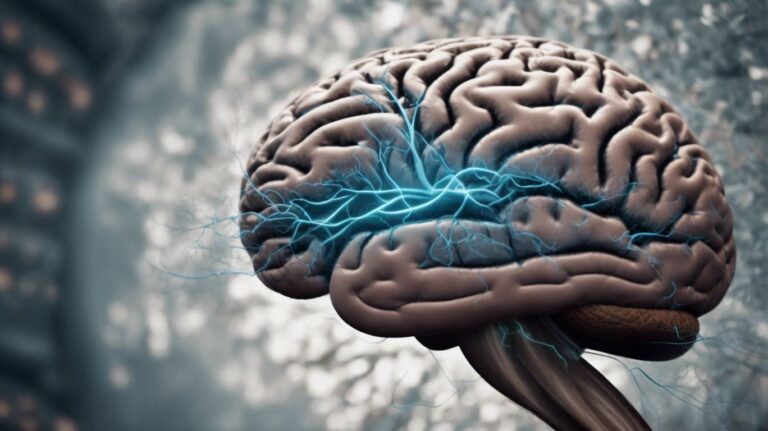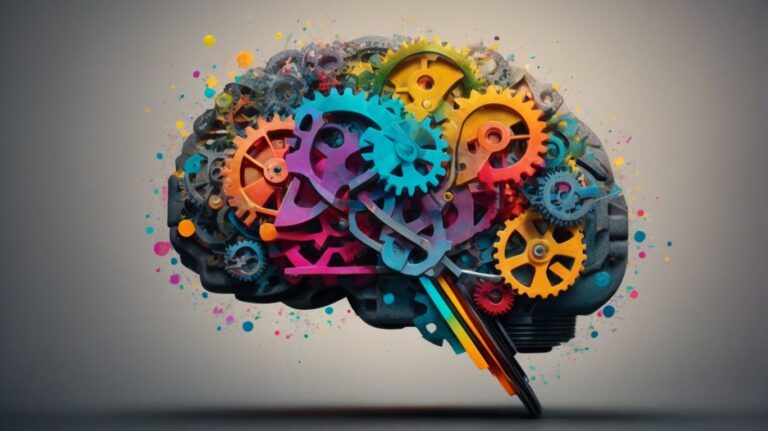Have you ever stopped to think about how we are able to hear the world around us? Auditory perception, the process by which we interpret and make sense of sound, plays a crucial role in our everyday lives.
From the way sound waves travel through the ear to the complex workings of the brain when we hear, there is much to unpack when it comes to understanding our sense of hearing. In this article, we will explore the different parts of the ear, how sound waves travel through it, and what happens in the brain when we hear. We will also discuss the factors that can affect auditory perception, such as age, gender, and genetics, as well as common misconceptions about hearing.
We will provide tips on how to protect your hearing, including wearing ear protection in loud environments, limiting exposure to loud noises, and getting regular hearing check-ups. So, grab a seat and let’s dive into the fascinating world of auditory perception!
Contents
What Is Auditory Perception?
Auditory perception refers to the process by which sound waves are interpreted and processed by the auditory system in the brain.
The auditory system is a complex network of structures working seamlessly to enable the perception of sound. Sound waves travel through the air and enter the ear canal where they strike the eardrum, causing it to vibrate. These vibrations are then transmitted to the three smallest bones in the body, the ossicles, which amplify the sound and send it to the cochlea. The cochlea, a spiral-shaped structure filled with fluid, houses tiny hair cells that convert the sound vibrations into electrical signals. These signals are then carried by the auditory nerve to the auditory cortex in the brain, where further processing and interpretation take place.
How Does Hearing Work?
Hearing is a complex process that involves the reception of sound waves by the outer ear, which travel through the ear canal to reach the middle ear and inner ear where they are converted into neural impulses for interpretation by the auditory nerve.
When sound waves enter the inner ear, they reach the cochlea, a snail-shaped structure filled with fluid that plays a crucial role in the hearing process. Within the cochlea, specialized hair cells are stimulated by the vibrations created by sound waves. These hair cells convert the vibrations into electrical signals. The frequency of the sound waves determines which specific hair cells are activated, thus allowing the brain to perceive different pitches.
What Are the Different Parts of the Ear?
The ear consists of three main parts: the outer ear, middle ear, and inner ear. The outer ear includes the pinna and ear canal, while the middle ear contains the eardrum and ossicles that transmit vibrations to the inner ear where the cochlea is located.
”
}
The outer ear serves as the funnel for sound waves, capturing and directing them towards the eardrum. The pinna, also known as the auricle, collects sound waves and channels them down the ear canal. This part of the ear not only helps in sound localization but also protects the delicate structures inside.
In contrast, the middle ear acts as a bridge that amplifies and carries sound vibrations from the eardrum to the inner ear. It consists of the tympanic membrane, commonly called the eardrum, and three tiny bones known as the ossicles – the malleus, incus, and stapes. These bones work together to transform airborne vibrations into mechanical signals.
The inner ear is where the magic of hearing truly happens, housing the cochlea, a spiral-shaped organ responsible for converting sound waves into electrical signals that the brain can interpret. Within the cochlea, specialized hair cells, or cilia, pick up these signals and send them to the brain via the auditory nerve for processing, allowing us to perceive and understand sounds.
How Do Sound Waves Travel Through the Ear?
Sound waves enter the ear through the ear canal, causing vibrations in the eardrum. These vibrations are then transmitted through the ossicles in the middle ear to the cochlea in the inner ear, where they stimulate hair cells responsible for converting sound into neural signals.
The journey of sound through the ear is a complex yet fascinating process. Once the vibrations reach the cochlea, an essential part of the inner ear, the tonotopic organization comes into play. This organization refers to the arrangement of frequencies along the length of the cochlea, where different frequencies of sound waves stimulate different areas of the cochlea.
Within the cochlea, the hair cells are finely tuned to respond to specific frequencies, thus exhibiting frequency selectivity. This selectivity allows for precise detection and processing of various pitches and tones, enabling us to distinguish between different sounds and perceive them accurately.
What Happens in the Brain When We Hear?
When we hear, neural impulses generated in the cochlea are sent to the auditory cortex located in the temporal lobe of the brain for further processing, interpretation, and perception of sound.
The auditory cortex, a critical region in the brain involved in auditory processing, decodes these neural signals, allowing us to comprehend the intricacies of sound. This area plays a crucial role in translating neural impulses into recognizable sounds.
The frequency theory, a principle related to auditory perception, asserts that the frequency of a sound wave is directly related to the rate at which the auditory nerve fires. This firing pattern is then analyzed by the auditory cortex, providing us with the ability to perceive and interpret various sounds.
What Factors Affect Auditory Perception?
Auditory perception can be influenced by various factors, including age, gender, and genetic predispositions that shape how individuals perceive and process auditory stimuli.
Age plays a significant role in auditory perception as hearing abilities tend to decline with age, particularly in the high-frequency range. For instance, older individuals often have difficulty detecting high-pitched sounds due to natural age-related changes in the inner ear.
In terms of gender, studies suggest that men and women may have differences in sound processing, with men generally exhibiting slightly higher sensitivity to low-frequency sounds compared to women.
Genetics also have a considerable impact on auditory perception, affecting aspects such as susceptibility to hearing loss and ability to discriminate between subtle differences in sound amplitude. Variations in specific genes related to auditory function can influence an individual’s overall auditory acuity and perception of tonal quality.
Age
Age plays a significant role in auditory perception, as individuals may experience changes in hearing sensitivity and potential hearing loss as they grow older.
As individuals age, there are several age-related hearing changes that can occur. One common change is a decline in the ability to hear high-frequency sounds, which can affect the clarity of speech and music. The inner ear structures responsible for processing sound, such as the cochlea, may experience wear and tear over time, leading to sensorineural hearing loss. On the other hand, conductive hearing loss, caused by issues in the outer or middle ear, can also become more common with age.
Gender
Gender differences can impact auditory perception, with studies suggesting that men and women may exhibit variations in hearing sensitivity and sound localization abilities.
Research indicates that auditory processing in males and females can differ due to various factors such as hormonal influences, brain structure, and genetics.
For example, some studies propose that estrogen levels in women could contribute to enhanced sound discrimination abilities, while testosterone levels in men might influence spatial hearing and sound localization skills.
These differences may play a role in how individuals perceive and interpret sound cues in their environment, affecting their overall auditory experiences and responses.
Genetics
Genetic factors can contribute to variations in auditory perception, influencing how individuals perceive and interpret sound frequencies, as proposed by the frequency theory.
This connection between genetics and auditory perception can be seen through the role of the basilar membrane in the cochlea, which plays a crucial part in frequency selectivity. Genetic predispositions can impact the structure and function of the basilar membrane, affecting cochlear tuning and thereby influencing how the ear responds to different frequencies of sound waves. Understanding these genetic influences can provide valuable insights into the diverse ways in which individuals experience and process auditory stimuli.
What Are the Common Misconceptions About Hearing?
Several common misconceptions exist about hearing, such as the belief that hearing loss only affects the elderly or that people with hearing loss cannot communicate effectively.
One prevalent misconception is that all individuals with hearing loss are completely deaf, when in reality, there is a wide spectrum of auditory impairments.
Another stereotype is that those with hearing difficulties lack intelligence, which is far from the truth. Many individuals with hearing impairments excel academically and professionally.
The assumption that using sign language is the primary mode of communication for all deaf individuals is inaccurate; some rely on lip-reading, assistive devices, or written communication.
We Hear with Our Ears, Not Our Brain
Contrary to common belief, hearing is not solely reliant on the ears but involves complex neural processes in the brain that interpret and make sense of auditory stimuli received by the ears.
When sound waves enter the ear, they are transformed into electrical signals that travel through the auditory nerve to the brain for processing. The brain’s auditory cortex plays a vital role in distinguishing between different sounds, recognizing language patterns, and interpreting music and other auditory experiences. Through the temporal theory, which suggests how the brain decodes the frequency of sounds, and the complex mechanisms of auditory perception, our brain creates a rich tapestry of sounds that shapes our understanding of the world around us.
Hearing Loss Only Affects the Elderly
While commonly associated with aging, hearing loss can affect individuals of all ages, highlighting the importance of early detection and intervention to address auditory perception issues.
Contrary to the common belief that hearing impairments are predominantly linked to the elderly population, data reveals that individuals of all age groups can experience varying degrees of hearing loss. From infants to young adults and middle-aged individuals, the prevalence of hearing impairments underscores the importance of raising awareness and promoting regular check-ups across the lifespan. The ability to perceive sound accurately, including frequency range and pitch perception, plays a crucial role in communication and overall quality of life at any age.
People with Hearing Loss Cannot Communicate Effectively
Individuals with hearing loss can communicate effectively through various assistive devices, communication strategies, and support systems, underscoring the adaptability and resilience of those facing auditory challenges.
One common misconception is that hearing loss impedes effective communication; however, advancements in technology and understanding of auditory processing have opened up an array of opportunities for those with hearing impairments. Through the implementation of place theory and training in sound localization techniques, individuals can hone their ability to interpret and respond to sounds in their environment. Tools like hearing aids, cochlear implants, and assistive listening devices offer practical solutions to enhance communication, enableing individuals to navigate conversations, social interactions, and daily activities with confidence.
How Can We Protect Our Hearing?
Protecting our hearing is essential in maintaining auditory health, and this can be achieved by wearing ear protection in loud environments, limiting exposure to loud noises, and scheduling regular hearing check-ups.
One of the critical aspects of preserving auditory health is understanding the impact of decibel levels on our ears. High levels of noise can lead to irreversible damage to the delicate structures of the inner ear, which are responsible for transmitting stimuli to the brain for processing. By being mindful of the duration and intensity of exposure to loud sounds, individuals can significantly reduce the risk of hearing loss. Incorporating noise-cancelling technologies in headphones and earplugs can also help in mitigating the harmful effects of environmental noise.
Wear Ear Protection in Loud Environments
In noisy settings, wearing ear protection such as earplugs or earmuffs can shield your ears from harmful noise levels and prevent potential hearing damage, consult a hearing care specialist for personalized recommendations.
There are various types of ear protection available to cater to different needs and preferences. Earplugs, made of soft materials like foam or silicone, fit snugly into the ear canal, blocking out sound waves and vibrations. Earmuffs, on the other hand, cover the entire ear, creating a physical barrier against loud noises.
Seeking advice from a hearing care specialist is crucial as they can assess your individual needs and provide guidance on the most suitable ear protection for your specific environment or activity.
Limit Exposure to Loud Noises
Reducing exposure to loud noises can help prevent auditory damage and protect your hearing abilities, as prolonged exposure to high decibel levels can lead to hearing loss and impact auditory perception.
Exposure to loud noises, especially for extended periods, can result in damage to the delicate structures in the ear responsible for hearing. The inner ear houses tiny hair cells that pick up sound vibrations and transmit them as neural signals to the brain.
When these hair cells are subjected to excessive noise levels, they can become damaged or even die, affecting the transmission of auditory information. This damage can manifest as temporary or permanent hearing loss, impacting one’s ability to perceive sounds accurately and differentiate between frequencies.
Get Regular Hearing Check-ups
Scheduling regular hearing check-ups with a hearing care specialist is crucial for monitoring your auditory health, detecting early signs of hearing issues, and addressing auditory concerns promptly to ensure optimal hearing function.
During routine evaluations, specialists assess the sensitivity of your auditory system to various stimuli, like different frequencies and intensities, to understand how your auditory processing functions. These assessments help in identifying any deviations from the norm and potential problems that might affect the neural impulses involved in hearing.
Early detection of auditory issues allows for timely intervention, reducing the impact on your overall quality of life. Seeking professional guidance ensures accurate assessment, personalized treatment plans, and ongoing support to maintain good auditory health.
Frequently Asked Questions
What is the psychology behind auditory perception?
The psychology of auditory perception is the study of how our brains process and interpret sounds, including speech, music, and other noises.
How does hearing work?
Hearing works by sound waves entering our ears and being transformed into electrical signals that are then sent to the brain to be processed.
What factors influence auditory perception?
There are many factors that can influence auditory perception, including individual differences, past experiences, and the context in which we hear a sound.
Can our hearing be influenced by our emotions?
Yes, our emotions can play a role in how we perceive sound. For example, if we are feeling anxious or stressed, we may be more sensitive to loud or sudden noises.
How does our brain localize sound?
Our brain uses both ears and the time and intensity differences between the sounds received by each ear to locate the source of a sound.
What is the impact of auditory perception on language development?
Auditory perception plays a crucial role in language development, as it allows us to distinguish between different speech sounds and understand language.




